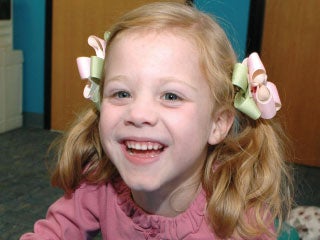Intensive Therapy

Children’s on 3rd Location
Physical Therapy Intensive Program
Patients who would most likely benefit from this program are those that are motivated, able to follow directions in a therapy setting, and able to tolerate exercises and therapeutic activity x 3 hrs with family centered functional goals.
- Patient Population: 3 yrs- 10 yrs (Will consider outliers on a patient-to-patient bases)
- Target population includes children with neuromotor/movement disorders.
- Frequencies: 4 days per week for 2/3 weeks
- Equipment: Proprioceptive suit, dynamic support system.
Constraint Induced Movement Therapy (OT)
- Constraint-Induced Movement therapy, or CI Therapy, is a family of treatments that teach the brain to “rewire” itself.
- Those who benefit most from this program are those who are limited in the use of one arm and hand, at least 2 years of age, able to follow directions and maintain attention for at least 15 minutes. Goals are more easily attained for children who have some use of their affected arm and hand at the beginning of the program. Family members/caregivers are expected to participate in the program in order to help their child continue to use his/her arm and hand in everyday activities.
- Patient Criteria:
- Typical patient types include: Cerebral Palsy, Stroke, Head Injury, & Brachial Plexus Injury
-
Frequency: Children are scheduled for 2-3 weeks, for 180 minutes of daily therapy. Each child is evaluated to identify needs and determine goals on the first day of the program. A removable fiberglass cast is made for the child to wear on the less affected side 24 hours daily for the entire time the child is participating in the program.
Questions or for more information: 205-638-6293
ADL Boot Camp (OT)
- Patient Criteria:
- At least 8 years and older
- Motivated to Change/learn new skills.
- Cognitive ability to understand.
- Fair to good UE function/No significant ROM of UE
- Able to maintain at least fair sitting balance in sitting with feet supported for dressing, grooming and mobility or good piece of equipment for sitting for self-feeding.
- Frequency: 3-5 days/week for 3 weeks
- Areas of Focus: Dressing, toileting, Grooming/Bathing and Feeding
Children’s Outpatient McWane Location
Robotics and Mobility Program Intensive (RAMP) PT& OT
This program is a multidisciplinary intensive burst of therapy focused on progressing family centered goals utilizing our robotic equipment.
- Frequency: 3-5 days per week/ 3 weeks
- frequency of each discipline is based on specific patient needs and goals.
- Generally, it is 2 days of OTs/ 2 Days of PT per week x 3 weeks.
- Robotics Equipment Available: Functional E-stim Bike (RT300), Bioness L300, Bioness Vector, Bioness BITs, Exoskeleton, Trexo, Functional E-Stim, Neurocom, Occulus, and Galileo vibration.
- Patient Criteria
- Includes children with neuromotor movement disorders. In this population, there are periods of steady state, but also periods of opportunity for progression due to maturation/development or following medical intervention. Likewise, there will be periods of regression with growth, surgery, or extended illness.
- Ages 3-18 (will consider outliers on a patient-to-patient basis)
- Able to follow directions of therapist in a therapy setting
- Motivated and cooperative
- Able to tolerate exercise and therapeutic activity for 3 hours with minimal breaks
How to Refer?
- Have the referring Physician fax a script to (205)638- 6740
- Evaluate for PT/OT Intensive.
- If you or families have questions or concerns:
- CI/ ADL bootcamp call Adam Knott at (205)638-2484
- PT Intensive at 3rd & RAMP call Tiffany DeLeonard (205)638-2230
- Programs typically fill up 6-9 months in advance so if you have a patient, you think would benefit, we encourage referring so we can start planning.
Billing
- Insurance is billed as any other therapeutic services and coverage will depend on specific policies and benefits.










